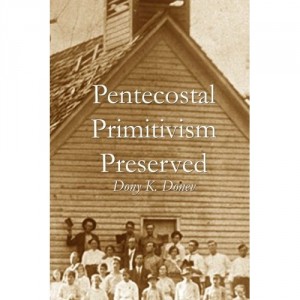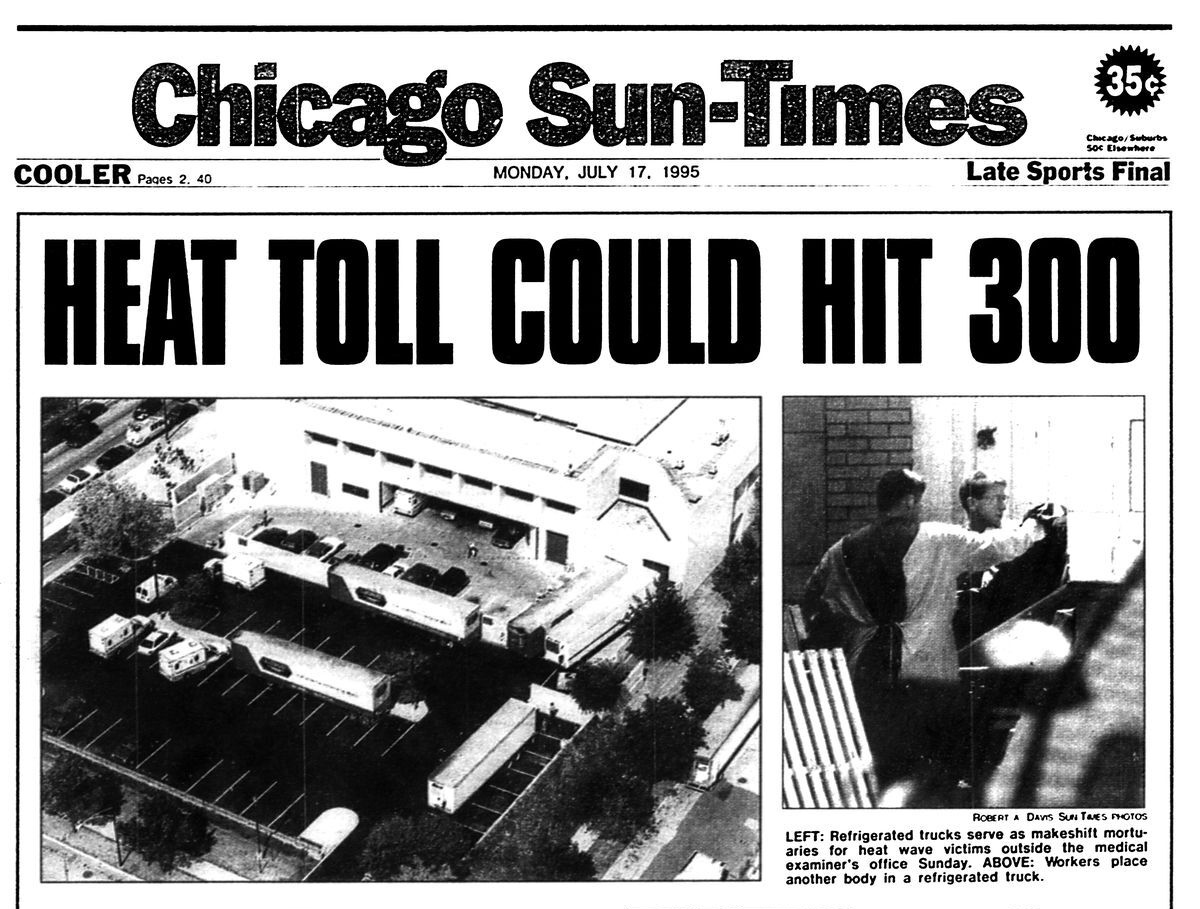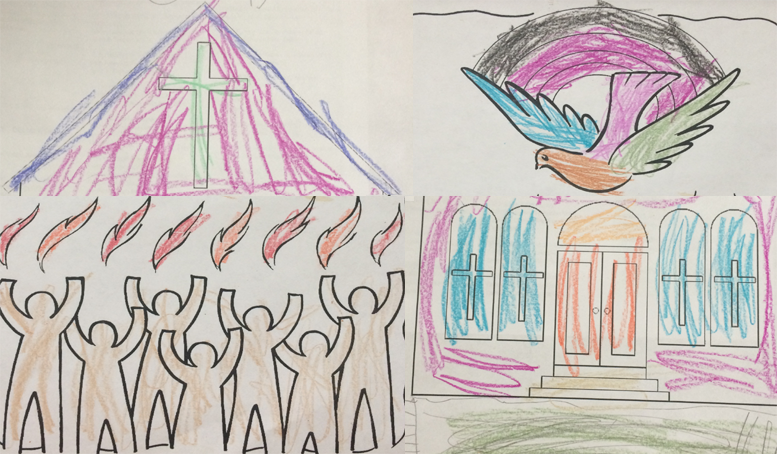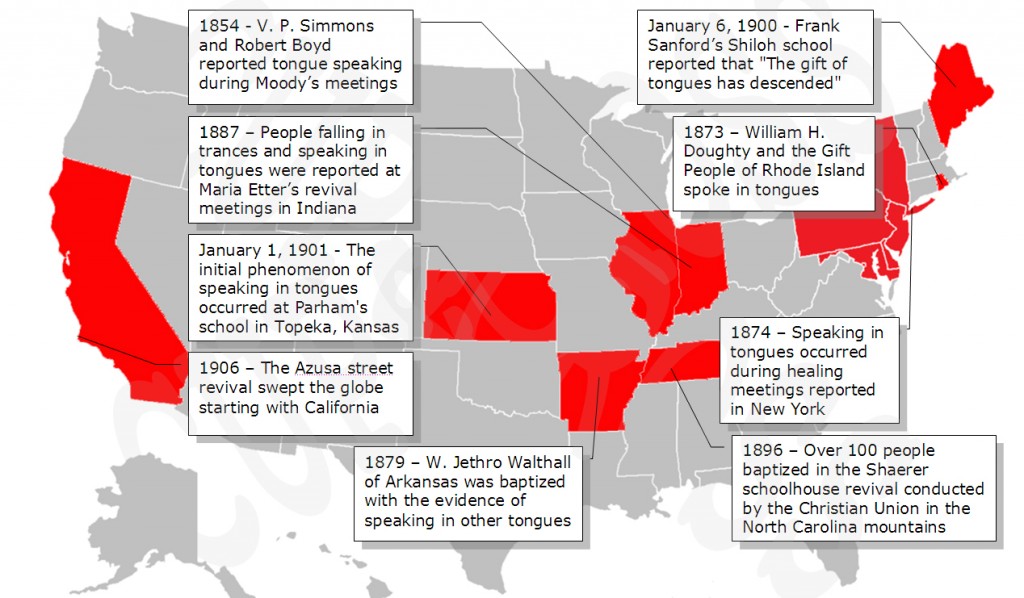Pentecostal Theology of Freedom for the Postcommunist Era
“Stand fast therefore in the liberty wherewith
Christ hath made us free” for “if the Son therefore
shall make you free, ye shall be free indeed”
This paper is intended as a part of larger research entitled Theology of the Persecuted Church. It focuses on they way freedom is understood by the underground church and its successor, the postcommunist church after the fall of the Communist regime. In this sense, the research presents the theological view of freedom from the time of postmodern transition in Eastern Europe in retrospect with the times of underground worship and in dialogue with the major modern theologians. The main purpose is to construct an authentic view of freedom in the major areas of the life and ministry of the postcommunist Pentecostal church.
Postcommunist Europe
On his first official visit to West Germany in May 1989, Mikhail Gorbachev informed Chancellor Kohl that the Brezhnev doctrine had been abandoned and Moscow was no longer willing to use force to prevent democratic transformation of its satellite states. At 6:53 p.m. on November 9, 1989, a member of the new East German government gave a press conference to inform that the new East German travel law would be implemented immediately. At the East Berlin Bornholmer Strasse, the people demanded to open the border. At 10:30 p.m. the border was opened.[1] That meant the fall of the Berlin Wall and the end of the Cold War.
The unification of one Germany brought the clash of two political extremes within one nation. It brought together two Europes kept apart for half-a-century, a dynamic which introduced the continent to a new set of opportunities among which was the vision for a unified Europe and its realization.
A new set of dilemmas was introduced as well. Among all economical, political, social, cultural and simply human points of diversity, religion remained central for the process through which the European Union was emerging. The official “United in Diversity” (reminding of the American E Pluribus Unum) claimed unification, without mentioning God. The new European constitution announced that Europe draws “inspiration from the cultural, religious and humanist inheritance of Europe.”[2]
For us who lived in the last days of Communist Bulgarian, the fall of the wall was a miracle which the world witnessed. Coming out from the severe Communist persecution and surrounded by the Balkan religious wars, suddenly the country of Bulgaria experienced a time of liberation which gave the start of spiritual revival mobilizing Bulgarian Protestants. In the midst of extreme poverty, due to prolonged economical crisis, this revival became an answer for many. It also provided a sense of liberation, but not in the Western political understanding of democracy and freedom, but rather liberation toward the realization of the Kingdom, a world much higher, much better and in way more realistic than any human ideality. The liberation from sin then turns not only into a social movement, but as a theological conception it provides an alternative to the existing culture thus becoming a reaction against the surrounding context and proposing a new theological model and a new paradigm for life itself based on substantive faith and belief.
Freedom of Will
Even when approached theologically, in the Eastern European postcommunist context today, the term freedom of will carries a strong political nuance. For many Eastern European Protestants, freedom characterizes the struggle against the communism regime and the divine motivation to endure it as a calling of faith for the individual and the community.
The years before communist era were characterized with opposition against the historical monopoly of the Eastern Orthodox Church. In this context, the protestant movement in Bulgaria also struggled against spiritual dominion defending the cause of religious freedom and the right of each individual and community to believe and express beliefs.
The hundred years of Bulgarian Protestantism have been accompanied with constant struggle against oppression of conscience and will thus creating a general acceptance of free human will. This has coincided with the theology of the largest and fastest growing Evangelical movements in Bulgaria. In this context, even evangelical churches, like the Baptists, have grown to accept and practice the doctrine of free will.
Based on the political, socioeconomic and purely ecclesial factors, in postcommunist Eastern Europe, the Calvinistic paradigm of predestination and election as practiced in a Western sense are not successful. This is based partially on their new doctrinal presence within the Bulgarian reality and their untested effectiveness through under persecution. It is also natural that they are often qualified in parallel with political and religious oppression, and therefore rejected as divine attributes or actions. If human regimes are oppressive through limiting freedom and consciences, how is God to identify with such regimes and practice the same type of “horrible decree?” On the contrary, in Eastern European Protestant theology, God is seen as a Liberator of human consciences and a desire for freedom.
By no means, is this tension to be confused with a denial of the total authority of God. God remains the electing God in Jesus Christ, but how?[3] Is it through a “horrible decree” or through a personal life-changing experience defined by the Bible? Is it through an oppressive act of lawful but unconditional predetermination which God by His nature is omnipotent to implement, or through an act of supernatural transformation of humanity through divine self-sacrifice? And does this election barricade every possible human choice? No, as it is obvious in the denial of Peter; but also as seen in his restoration, that every choice of human will is answered by God through unconditional divine love.
Therefore, we experience “the secret of predestination to blessedness,” not in a cause and effect paradigm as Augustine and the Reformers, but rather through preserving its significance by experiencing the love of God.[4] Thus, the human will is freed by the love of God to receive salvation for eternity. The human freedom then is not ignored or oppressed, but on the contrary it is “placed in the context of cosmic drama” where the real bondage is not the one by God, but the one by sin which oppresses the human will and distances it to death. The Gospel, however, proclaims the victory of Christ over these oppressors thus liberating human will to its initial creation state as a gift from God.[5] This theology comes from a concrete experience of God in real life, and the quest to serve and follow God. As theology shows that the truth about God and the truth about ourselves always go together, the experience of God is a constant tension and a dynamic process, rather than blind servanthood to rigid principles that can never fully encompass the divine will. And through this experience of liberation of the human will in order that one may be free to choose salvation through Christ, God establishes His “testament of freedom.”[6]
Freedom from Oppression
As God liberates humanity from sin, He liberates it from sin’s moral and social consequences. Thus, forgiveness of sin presupposes not only the quest for sanctification and perfection after the image of God, but also the struggle against oppression and establishment of social balance. As the above shows, the postcommunist revival in Eastern Europe cannot be explored apart from the contextual political and socioeconomic dynamics. The reason for this is that the Spirit with value before God is a social spirit that makes the expression of the divine liberation the very purpose of the existence of the church.[7] The practice of this expression challenges the relationship between theology and practice as it questions theology’s epistemological and praxis relationship to the oppressed with whom Christ is crucified.[8]
As in such context, theology is challenged to identify with action, the church must choose between contextualizing and enforcing theology. To choose contextualization is to attempt to relate it to the existing culture thus creating a state of relativism. Such approach is observed in some Asian and Black theology. The danger is to go beyond the boundary pass which theology ceases being theology in action and becomes simply a nominal religious culture. In Eastern Europe, such approach has been long-practiced by the Eastern Orthodox and has unquestionably resulted in nominal religion. The nominality of its expression has been a factor preventing the experience of God, thus denouncing the very reason for the church’s existence. Attempts to restore the Eastern Orthodox “symphony” between church and state have altered the existence of the independent synods which claim the succession of the same historical religious institution.
The second direction, to move toward enforcement of theology after the paradigm proposed by Liberation theology, is quiet a dangerous approach often resulting in armed conflicts. Keeping in mind the historical tension on the Balkans and Bulgaria’s success in undergoing the postcommunist transition without an armed civil conflict, this approach is virtually inapplicable. Therefore, an alternative must be proposed before history itself become oppression.
In this context, a move toward a theology of freedom seems most reasonable. It must purpose to prevent political and socioeconomic oppressions which are already present in various legal and illegal forms in Bulgaria. Such paradigm must also be concerned with intrachurch oppressive tensions which are present both among and within religious denominations, striving especially against such oppressive modes that come from the desire of an oppressed mentality to oppress others.
Such working model of social transformation is presented in Paul’s Epistle to Philemon. An older interpretation of the book explains that Onesimus, a runaway slave, meets Paul in prison, becomes a Christian and is sent by Paul back to his master. A more cotemporary interpretation claims that Onesimus is a slave sent by Philemon to help care for Paul in prison where he converts to Christianity and desires to stay with Paul as a missionary associate.
Regardless of the interpretation of the story plot, the epistle carefully presents a more in-depth set of problems that deal with persecution, imperialism, slavery, mastership, classes, ownership, imprisonment and above all justice. It further makes a more aggressive mood and places the church, represented in the text not merely by masses, but by the very divine appointment of apostolic authority.
The theme of imprisonment as a direct result of persecution is clearly present through the epistle’s plot and more specifically verses 1, 9, 13 where Paul uses the expression “prisoner of Christ” to describe his present status. The expression “prisoner of Christ” carries a sense of belongingness making the phrase different than the sometimes rendered “prisoner for Christ.” While the latter wrong rendering moves the focus toward the purpose of Paul’s imprisonment, the Greek genitive in the phrase “prisoner of Christ” denotes ownership. Although imprisoned in a Roman prison and kept by a Roman guard, Paul denies the Roman Empire ownership of himself, thus claming that he is owned by Christ alone. This is also a denial of the Roman citizenship that has led to this oppressive state of persecution and the recognition of a citizenship in the divine reality of liberation.
Paul’s negation goes a step further, proposing that while the Roman Empire may be authoritative in the temporal context, by no means it is authoritative in the spiritual eternal reality. Having established the temporality of Rome and the eternity of God, Paul denies to the Roman Empire the right to pronounce judgment over social injustice and to establish social status or world order, proposing that no one but the Christian church is the agent divinely designed and supernaturally equipped for these functions. The social injustice of persecution and wrongful imprisonment, the social tensions between classes, the problems within the church and every dilemma presented in the epistle are to be judged by no one but God through his elect. The reality of the situation is that the church is experiencing severe persecuting because the Roman Empire is denying the church social space. Paul, however, denies the reality of such oppressive human system and claims that the church is the one that must deny social space for oppressive structures as the Roman Empire.
The text calls for revolution; not merely, a revolution in the physical violent sense, but a revolution of the mind where human existence and mentality are liberated through Biblical paradigm combined with divine supernatural power to participate in a new spiritual social reality where justice is set by the standard of God. Such a move calls for a new paradigm and for a theology of freedom which creates an anti-culture and an alternative culture to the existing oppressive system. Such idea challenges the church with the claim that Christianity is and should be a scandal and an offence to the world, and not merely a religion but the belief that “Jesus is the most hazardous of all hazards.”[9]
Feast of Freedom or the Bulgarian Easter
Amidst political and socioeconomic crises since the fall of the Berlin Wall, Bulgaria has experienced a rebirth of Bulgarian spirituality. Many observers have referred to this restoration process as the rebirth of the Bulgarian Easter, and even which historically has been connected with the unity and power of the Bulgarian nation.
Bulgaria accepted a Christian country in 864 AD under the reign of Kniaz Boris I. A millennium later, in the middle of the 19th century, Bulgaria found itself occupied by the Ottoman Empire and religiously restricted by the Greek Orthodox Patriarchy which dictated the religious expression of the Bulgarian church.
On April 3, 1860, during Easter Sunday service in Constantinople, the Bulgarian bishop Illarion of Makriopol expressed the will of the Bulgarian people by solemnly proclaiming the separation of the Bulgarian church from the patriarchal in Constantinople. The day commemorating the Resurrection of Jesus Christ coincided with the resuscitation of the Bulgarian people. Although, the struggle continued for another decade, under the influence of Russia, Turkey was forced to legally recognize the independence of the Bulgarian Orthodox Church. In 1870 a firman of the sultan decreed the establishment of an autonomous Bulgarian church institution.
The connection between the historical Bulgarian Easter and the contemporary rebirth of Bulgarian spirituality has been used in many aspects of the Bulgarian politics and culture at the beginning of the 21st century. As part of the Eastern Church, Bulgarian orthodox theology pays much more attention to the resurrection rather than to the birth of Christ thus placing its eschatological hope in a future experience rather then a past one. Such dynamic is natural, as the acceptance of Christianity in Bulgaria purposes to bring hope in national politics and communal life. Thus, in an almost historical tradition, the Bulgarian Easter represents the Bulgarian eschatological hope for a supernatural national revival. It also communicates with the sense of liberation from political, economical and religious oppression and a longing for the freedom to live life.
The Bulgarian Easter then provides an alternative to the present moment of tension and straggle in the crucifixion. Similar to Moltmann’s view of the resurrection of Christ, the Bulgarian hope foresees the resurrection of the Bulgarian nation as a divine act of protest against oppression and injustice and as recognition of God’s passion for life.[10] Thus, the resurrection is an alternative not only to the present world, but also to the reality of eternal death.
Death is therefore seen not only as an agent of eternity, but also as an agent of fear, suffering and oppression in the present reality which affects life in all its economical, political, social and even religious aspects. As death diminishes the value of life, the liberating power from Easter often remains ignored. But in order for the church to continue being a church, it must speak as a witness of the resurrection which is impossible without participating in God’s divine liberation which recreates the word to its original state of creation. Thus, the hope of Easter means rebirth of the living hope.
The resurrection hope is an influential factor which directs the life dynamics of the church beyond its walls. Being liberated from sin, the believer desires the liberation of others and claims the right to serve. But true Biblical servanthood cannot exist and therefore does not tolerate oppression, thus becoming a social transformation factor in the midst of oppressive cultures. The resurrected church rebels against the destruction of life and the denial of the right of very human to live. But different than other human systems, the church does not feed off its resistance against oppression. Its source of power is the eschatological hope for the full restoration of life and its eternal continuation in eternity.
A final question must be raised about the pessimistic character of such hope, as traditional evangelical eschatology in Bulgaria has been premillennial and due to its Pentecostal majority clearly pretribulation. Such eschatological views, at large, have been considered to be pessimistic and escapist in nature due to their strong focus on the future. Yet, such determinative presupposition seems inaccurate and much limited in its observation when applied within the postcommunist context where Protestant churches have been greatly involved in the struggle against oppressive regimes and constraining politics even to the point of martyrdom.
It is then natural, that in the underground context of persecution it is unthinkable for the church to identify with the regime in anyway. Actually, such identification is vied by the believers as spiritual treason and cooperation with authority is viewed as backsliding. By no means, however, is such a premillennial eschatological view in this context pessimistic for the church. Neither does the church remain unconcerned with the present reality. On the contrary, through its very act of negation of the right of an oppressive system to dictate reality, the church establishes an alternative culture which is the Kingdom of God. Thus in the midst of persecution and oppression, the church remains in its Biblical boundaries as an agent of the Kingdom of God by providing eschatological hope.
Yes, this eschatological view is escapist, as it promotes eternal separation from the oppressive reality. What other alternative can a persecuted and underground church find to survive and relate to the Biblical image of the ecclesia and at the same time it is clearly concerned with the transformation of the present world as shown above? For while its pessimism concerns the oppressive system of the world, its optimism declares the church as an already-reality in which freedom of sin, death and oppression and eternity with God is celebrated. Therefore, the church itself remains an optimistic reality and optimistic eschatological hope. For, without this hope the tension of life toward future and even life it self will vanish.[11] Without hope for the beyond, we remain in the now for eternity.
Epilogue
Due to its relational and reactional role to historical process, Eastern European postcommunist theology is a new historical and theological event. Yet, as theology of freedom, it relates to other theological approaches internationally. This similarity is enforced by the approaching postmodern era which the Bulgarian nation seems unprepared to understand. In such context, the church and its theology become the agents providing answers to social tensions.
Postcommunist theology provides a point of departure from the oppressive system of the communist regime toward a new social and ecclesial alternative. Such dynamic is by no means new to the Protestant movement in Bulgaria, which has dealt successfully with these same issues even in more severe context of underground existence and persecution. Therefore, the church has proved its commitment to identify with the oppressed through addressing and engaging its experience through the experience of God and its adequate and substantive theological interpretation. Such approach provides an alternative to oppressive system and structures, unquestionably critiques their tools and methods, and rebukes the agents who represent and practice them, thus denying them place in history.
A further concern for developing strategies for social transformation is also strongly present including education, law, politics and economics. These dynamics employ Christians in a common task and motivate the church for further development and implementation in order to connect theology with practice and thus to fulfill the divine calling for church’s role in the processes of restoration of justice and social transformation, both now and eschatologically.
Bibliography
Anderson, David E. “European Union Debate on Religion in Constitution Continues”
May 26, 2004.
Barth, Karl (tr. E.C. Hoskyns), The Epistle to the Romans (Oxford: Oxford University
Press: n/a).
Ford, David F. ed., The Modern Theologians (Malden: Blackwell Publishers, 1997).
Geffrey B. Kelly & F. Burton Nelson, A Testament to Freedom: The Essential Writings
of Dietrich Bonhoeffer (San Francisco: Harper Publishing House, 1995).
Green, Clifford. Karl Barth: Theologian of Freedom (Minneapolis: Fortress Press, 1989).
Grentz, Stanley J. Theology for the Community of God (Grand Rapids: Eerdmans
Publishing Company, 1994).
Johnson, Ed. Associated Press, June 19, 2004.
Moltmann, Jürgen. The Power of the Powerless, (Norwich: SCM Press Ltd., 1983).
Taylor, Mark K. Paul Tillich: Theologian of the Boundaries (London: Collins, 1987).
[1] The Fall of the Berlin Wall, http://www.dailysoft.com/berlinwall/history/fall-of-berlinwall.htm June 29, 2004; also Jeremy Isaacs and Taylor Downing, The Cold War, Thomas Fleming, The Berlin Wall and Wolfgang Schneider, Leipziger Demotagebuch.
[2] Ed Johnson, Associated Press, June 19, 2004 and David E. Anderson, “European Union Debate on Religion in Constitution Continues” May 26, 2004.
[3] Clifford Green, Karl Barth: Theologian of Freedom (Minneapolis: Fortress Press, 1989), 184.
[4] Karl Barth, (tr. E.C. Hoskyns), The Epistle to the Romans (Oxford: Oxford University Press: n/a), 324.
[5] Stanley J. Grentz, Theology for the Community of God (Grand Rapids: Eerdmans Publishing Company, 1994), 437.
[6] Geffrey B. Kelly & F. Burton Nelson, A Testament to Freedom: The Essential Writings of Dietrich Bonhoeffer (San Francisco: Harper Publishing House, 1995).
[7] Green, 106.
[8] David F. Ford, ed., The Modern Theologians (Malden: Blackwell Publishers, 1997), 369.
[9] Barth, 99.
[10] Jürgen Moltmann, The Power of the Powerless, (Norwich: SCM Press Ltd., 1983).
[11] Mark K. Taylor, Paul Tillich: Theologian of the Boundaries (London: Collins, 1987), 325.
EU approves Bulgaria’s Euro adoption despite protests
Thousands protest in Bulgaria against the Euro
Pentecostal articles for Pentecost Sunday
Offering a few recent Pentecostal articles in light of the upcoming Pentecost Sunday celebration:
- The Forgotten Azusa Street Mission: The Place where the First Pentecostals Met
- Diamonds in the Rough-N-Ready Pentecostal Series (Complete)
- 95th anniversary of the Pentecostal movement in Bulgaria
- Toward a Pentecostal Solution to the Refugee Crises in the European Union
- Historical and Doctrinal Formation of Holiness Teachings and Praxis among Bulgarian Pentecostals
- Pacifism as a Social Stand for Holiness among Early Bulgarian Pentecostals
- The Practice of Corporate Holiness within the Communion Service of Bulgarian Pentecostals
- Sanctification and Personal Holiness among Early Bulgarian Pentecostals
- First Pentecostal Missionaries to Bulgaria (1920)
- Historical and Doctrinal Formation of Holiness Teachings and Praxis among Bulgarian Pentecostals
- The Everlasting Gospel: The Significance of Eschatology in the Development of Pentecostal Thought
- Online Pentecostal Academic Journals
- What made us Pentecostal?
- Pentecostalism and Post-Modern Social Transformation
- Obama, Marxism and Pentecostal Identity
- Why I Decided to Publish Pentecostal Primitivism?
- Historic Pentecostal Revival Tour in Bulgaria Continues
- The Land of Pentecostals
- Pentecostal Theological Seminary Address
- A Truly Pentecostal Water Baptism
30 Years of the Bulgarian Church of God in Chicago

July 10, 2015 marks the 20th anniversary of the first service of the Bulgarian Church of God in Chicago in 1995.
We have told the Story of the first Bulgarian Church of God in the Untied States (read it here) on numerous occasions and it was a substantial part of our 2005 dissertation (published in 2012, see it here).
From my personal memories, the exact beginning was after Brave Heart opened in the summer of 1995 and the Narragansett Church of God closed the street for a 4th of July block party with BBQ, Chicago PD horsemen, a moonwalk and much more.
The first service in the Bulgarian vernacular was held Sunday afternoon, July 10th 1995 being the true anniversary of the Bulgarian Church in Chicago. Only about a dozen were present and the sermon I preached was from Hebrews 13:5. Unfortunately, to this day 20 years later, we cannot locate the pictures taken that day to identify those present. And some have already passed away.
Using a ministry model that later became a paradigm for starting Bulgarian churches in North America (see it in detail) the church grew to over 65 members in just a few weeks by the end of July. This was around the time the movie Judge Dread had opened and the first edition of Windows 95 was scheduled for release in Chicago. I saw them both at the mall on upper Harlem Boulevard.
The Bulgarian Church of God in Chicago followed a rich century-long tradition, which began with the establishing of Bulgarian churches and missions in 1907. (read the history) Consecutively, our 1995 Church Starting Paradigm was successfully used in various studies and models in 2003. The program was continuously improved in the following decade, proposing an effective model for leading and managing growing Bulgarian churches.
Based on the Gateway cities in North America and their relations to the Bulgarian communities across the continent, it proposed a prognosis toward establishing Bulgarian churches (see it here) and outlined the perimeters of their processes and dynamics in the near future (read in detail).
After a personal xlibris, the said prognosis were revisited in 2009 in relation to preliminary groundbreaking church work on the West Coast and then evaluated against the state of Bulgarian Churches in America at the 2014 Annual Conference in Minneapolis.
We’re yet to observe the factors and dynamics determining if Bulgarian churches across North America will follow their early 20th century predecessors to become absorbed in the local context or alike many other ethnic groups survive to form their own subculture in North America. We will know the answer for sure in another 30 years…

Bulgarian Pentecostal riddle…
Five kings with five crowns
Four bishops and castle in the middle
Who will blow the whistle
and who will play the fiddle?
A Bulgarian Pentecostal riddle…
Rapid Decline of Holy Spirit Baptisms (Research Study, 2025)
This study was first published by Cup & Cross Ministries International on March 1, 2018
Information Regarding the Questionnaire and the Church of God Statistics
The survey was developed by Dr. G. D. Voorhis in 2005 with the hope that it might contribute in some small way to ascertain certain trends which appear to be developing in the Church of God (headquarters in Cleveland, Tennessee). The primary emphasis was on the baptism of the Holy Spirit, according to Acts 2:4, with the initial evidence of speaking with other tongues as the Spirit gives the utterance.
One might think that the charismatic movement of the 1960’s and 1970’s, with its effect on mainline interdenominational churches, would bring an upsurge in traditional Pentecostal churches as individuals experienced this infilling of the Spirit, but this was not so in the Church of God. This survey, with the confounding variables it might contain, along with statistics supplied by the General Headquarters of the Church of God, proves without a reasonable doubt that the Church of God is rapidly becoming a non-Pentecostal organization.
The statistics alone, supplied by General Headquarters, show that during the period of Sept., 2003 to August, 2004, we had 266,419 conversions, but only 60,926 that were baptized with the Holy Ghost. This downward trend in Holy Ghost baptisms has been continuing since 1960 (which was as far back as we could go in computerized records), up until the present time. In fact, the 2003-2004 statistics compute to a 23% decline in the Holy Ghost baptisms in this one year alone….
Going back to Portrait and Prospects, [Dr. J. D. Bowers, Ph.D., editor] the only survey ever authorized in the history of the Church of God (and I think one of the best things of this type ever coming from Headquarters), Mitchell W. Flora, D.Min., stated on page 35, “Also, while elements of Pentecostal spirituality may be present, the survey does not reveal the regularity of these occurrences, nor does it reveal the extent of these practices. The real question is how many of those who attend our churches are sanctified or filled with the Spirit.”
In the same writing, “Dr. John Maxwell’s assessment that our denomination is prone to the rigors of a slow death,” we again quote page 80: “Church of God ministers, with which of the following are you very satisfied? Spiritual life: 42% of the Church of God answered ‘yes’, but 68% of other Pentecostals reported ‘yes’.”
Well under half of our ministers are paying the price of prayer, fasting, and devotion to the Word of God to feel satisfied with their spiritual life. We are outdone by other Pentecostals by 26%. Another quote we should mention is on page 88: “Innovative pastors and others desiring to change to achieve greater effectiveness exhibit a tendency to disconnect ministry development and practice from their Pentecostal identity and faith”….
Based on this, and on the statistics from the Church of God General Headquarters in Cleveland, Tennessee, as well as the computations that were done from the surveys by Gary Anderson (an engineer in computer and mathematics, as well as a member of Central Church of God), who put in countless hours perfecting the statistics as much as possible from the data available, I must concede that the Church of God, based in Cleveland, Tennessee, is rapidly becoming a non-Pentecostal organization. All that can change this trend is a miracle of God such as the Cane Ridge Camp Meeting or the Azusa Street Mission. We need a last-day revival, accompanied by a great outpouring such as happened at Pentecost in the book of Acts.
If I read my Bible correctly, this is not promised universally; however, this does not keep churches from paying the price in prayer and consecration to experience local revivals and enjoy great Pentecostal experiences, in spite of the last days before the coming of our Lord to rapture His church and send His judgments on this wicked, sinful earth. “Even so, come Lord Jesus.”
Within Holy Ghost Baptisms:
Within 44 years, Holy Ghost baptisms grew by 54.22%, with an average annual growth rate of 0.98950%, less than 1%. The ratio between church members and NEW HOLY GHOST BAPTISMS DROPPED 17.6% to 6.1% currently. Currently, only 6% of our members have the Holy Ghost baptism. (Dr. G. D. Voorhis, Experiences in Pentecost: 33 A.D. – 2005 A.D., p.311-16)
I myself have preached the Pentecostal Way of Salvation since age 16. I will soon be 50 years old with over 30 years invested in ministry with the Church of God. You have probably invested even more. I didn’t respond to the Heavenly Call to put all this work into the Kingdom, only to find out 30 years later that 90% of our church folk don’t even know who the Holy Spirit is. We simply cannot claim, as a movement and as a church, that we are Pentecostal if most of our members have never experienced His Baptism with tongues and fire.
For this reason, I am re-committing myself and ministry to revival and restoration of the Pentecostal Message through praying, fasting and preaching:
- salvation of the sinner’s soul and entire sanctification through the Blood of Jesus
- baptism with the Holy Spirit and fire with initial evidence of speaking in tongues
- supernatural gifts and ministries of the Holy Spirit
- healings, deliverance and signs following
- pre-Millennial return of Christ and pre-Tribulation Rapture of His Church to glory.
As I was considering how to end this already long letter, I came across the following statement one of my students made in a final paper:
“I hope this is a section where I am allowed to be real. Here I would like to answer the question, ‘How will the study of the Book of Acts change the way that you think or live as a Christian?’ I write this with tears in my eyes because I don’t know how to be filled with the Spirit in such a way as Steven or Paul. I’m sitting at my desk wondering how I can become so filled with the Spirit that I am not only willing to die for my faith, but that I can do so with the peace that Stephen had?”
Please consider the URGENCY of this generation!
- Call us and let us reason and plan what we can do together to change this rapid decline.
- Revival will not come without preaching!
- Revival of Pentecost will not come without preaching the Message of Pentecost.
For the Kingdom,
Rev. Dony K. Donev, D. Min.
Back to the Basics of Pentecost: Diamonds in the Rough-N-Ready (2025)
 Since the beginning of the 21st century, only 6-10% of new born believers in America receive the Baptism with the Holy Spirit, which by 2018 has resulted in:
Since the beginning of the 21st century, only 6-10% of new born believers in America receive the Baptism with the Holy Spirit, which by 2018 has resulted in:
- Over 60% within Global Pentecostalism do not speak in tongues
- A major doctrinal shift within Pentecostal Theology today claims speaking in tongues is not the only evidence of Holy Spirit Baptism
- Some theologians even claim there is no initial evidence in the Bible
- Others today go further to believe that no outward sign of the Holy Spirit baptism is necessary.
For this reason, WE are re-committing ourselves and ministry to revival and restoration of the Pentecostal Message through praying, fasting and preaching:
- Salvation of the sinner’s soul and entire sanctification through the Blood of Jesus
- Baptism with the Holy Spirit and fire with initial evidence of speaking in tongues
- Supernatural gifts and ministries of the Holy Spirit
- Healing, deliverance and signs following
- Pre-Millennial return of Christ and pre-Tribulation Rapture of His Church to glory
Please consider the URGENCY of this generation!
Let us reason together what can we do to prevent this rapid decline in Biblical spirituality.
Revival will not come without preaching!
Revival of Pentecost will not come without preaching the Message of Pentecost.
Speaking in Tongues in America Prior to the Azusa Street Revival of 1906
April, 1906 – The Azusa street revival swept the globe starting with California
January 1, 1901– The initial phenomenon of speaking in tongues occurred at Parham’s school in Topeka, Kansas
January 6, 1900 – Frank Sanford’s Shiloh school reported that “The gift of tongues has descended”
1896 – Over 100 people baptized in the Shaerer schoolhouse revival conducted by the Christian Union in the North Carolina mountains
1887 – People falling in trances and speaking in tongues were reported at Maria Etter’s revival meetings in Indiana
1874 – Speaking in tongues occurred during healing meetings reported in New York
1873 – William H. Doughty and the Gift People of Rhode Island spoke in tongues
1854 – V. P. Simmons and Robert Boyd reported tongue speaking during Moody’s meetings

FURTHER READING:
Church of God (Cleveland, TN)
- Alive, alive! (A personal testimony)
- Church of God Primitivism
- Bulgarian Church of God
- J.W. Buckalew
- Why revival came? by Dr. Charles Conn
Azusa Street Revival of 1906
- Lucy F. Farrow: The Forgotten Apostle of Azusa
- The FORGOTTEN ROOTS OF THE AZUSA STREET REVIVAL
- Azusa Street’s Apostolic Faith Renewed
- Azusa Street Sermons
- Pentecostal Primitivism Preserved
Prior to Azusa Street Revival of 1906
- First person to speak in tongues in the Assemblies of God was William Jethro Walthall of the Holiness Baptist Churches of Southwestern Arkansas
- The Work of the Spirit in Rhode Island (1874-75)
- Speaking in Tongues in America Prior to the Azusa Street Revival
- WAR ON THE SAINTS: Revival Dawn and the Baptism of the Spirit
- How Jezebel Killed One of the Greatest Revivals Ever
Pop Culture and Armageddon
A Call to Righteousness: Impending Judgment by Dr. David Franklin (1994)
May 1, 2025 by Cup&Cross
Filed under Featured, News, Publication
“A Call to Righteousness: Impending Judgment,” authored by Dr. David Franklin in 1994, serves as a prophetic admonition to nations, drawing parallels between contemporary societal behaviors and the biblical narratives found in the Book of Ezekiel. In this concise 48-page work, Franklin underscores the consequences that befall nations persisting in moral and spiritual decline, emphasizing themes of desolation, destruction, dispersion, despair, and the hope of prophetic restoration. Central to Franklin’s discourse is the analysis of Ezekiel chapters 12 and 14. He posits that when a nation indulges in violence and forgets its foundational spiritual values, it stands accountable before the Sovereign Lord. Franklin delineates a divine sequence: persistent wrongdoing leads to confrontation by God, followed by periods allotted for repentance. Should these opportunities be ignored, divine judgment becomes inevitable upon the unfaithful nation.
Anticipating global shifts, Franklin calls for international righteousness and critiques the prevailing economic complacency of his time. He challenges the “debt-free” myth, forecasting significant economic transformations. Notably, these insights were penned years before discussions on foreclosures and global economic crises became prominent, showcasing Franklin’s foresight into financial vulnerabilities that would later manifest.
A particularly compelling segment of the book delves into Ezekiel’s vision concerning the departure of the Glory of God. Franklin interprets this as a cautionary tale for contemporary society, suggesting that the withdrawal of divine presence is a direct consequence of collective disobedience and moral decay. This interpretation serves as both a warning and a call to action, urging readers to reflect on their spiritual commitments and the presence of divine glory in their communities.
The prophetic nature of Franklin’s work gained renewed attention post the September 11, 2001 attacks. Readers and scholars revisited “A Call to Righteousness,” noting its prescient warnings about impending judgment and the moral state of nations. This resurgence highlighted the book’s enduring relevance and its capacity to speak to unfolding global events.
In essence, “A Call to Righteousness: Impending Judgment” is more than a historical or theological treatise; it is a timeless exhortation. Franklin challenges individuals and nations alike to introspect, repent, and realign with principles of righteousness. His work serves as a reminder that the trajectory of a nation is profoundly influenced by its collective moral and spiritual choices, and that heeding calls to righteousness is paramount to avert impending judgment.
In 1994, as a prophetic warning to the nation some seven years before the 9/11 attacks, Dr. David Franklin wrote “A Call to Righteousness: Impending Judgment.” Drawing conclusions from Ezekiel’s chapter 12 desolation, destruction, dispersion, despair and prophetic hope in chapter 14, he warns that:
(1) When a nation persists in violence, the Sovereign Lord confronts and holds responsible
(2) When a nation forgets God, He allows for times of repentance
(3) If repentance is ignored, God will expose and execute judgment on an unfaithful nation.
The book continues with a call for international righteousness (p. 10) and a critique of the debt-free myth proclaiming a time of economic shift (p. 11-12). Remember, this warning was written two decades before anyone in America had mentioned foreclosure, crises or global economic crises. But my favorite chapter still is the interpretation of Ezekiel’s vision of the departure of the Glory of God (p. 20-21).
 I read this book back in 1999 and frankly had forgotten about it until 2011 when, at a young ministers training camp in the mountains of Bulgaria, we experienced what we consider the most genuine appearance of the Glory of God in our whole ministry. We wrote about it then and presented our observation at the 2012 Missions Conference at the Good Shepherd Church of God inPahokee,FL. The four points of our observation carry a tremendous prophetic resemblance to what Dr. David Franklin had proclaimed in his book 18 years ago:
I read this book back in 1999 and frankly had forgotten about it until 2011 when, at a young ministers training camp in the mountains of Bulgaria, we experienced what we consider the most genuine appearance of the Glory of God in our whole ministry. We wrote about it then and presented our observation at the 2012 Missions Conference at the Good Shepherd Church of God inPahokee,FL. The four points of our observation carry a tremendous prophetic resemblance to what Dr. David Franklin had proclaimed in his book 18 years ago:
(1) Every time God renews His covenant with His people, He shows His presence.
(2) We know that God is present in the covenant, because He shows His glory. It happened to Moses and his generation. And it also happened to Solomon several hundred years later.
(3) When a generation looses the vision of the Glory of God, God begins renewing His covenant again with a new generation.
(4) God is not satisfied with a people who know the signs and the blessings of the covenant. He rests not until He is revealed as the God of the covenant.











